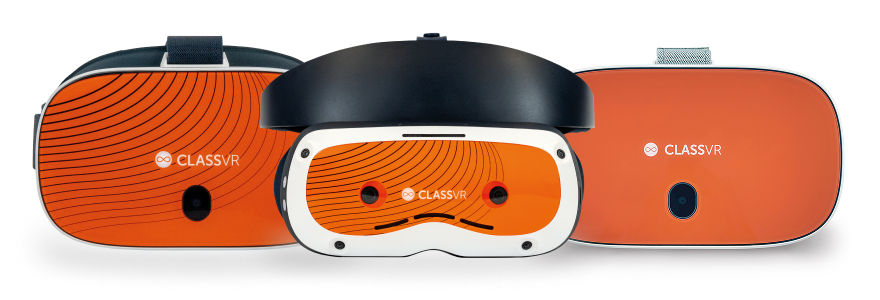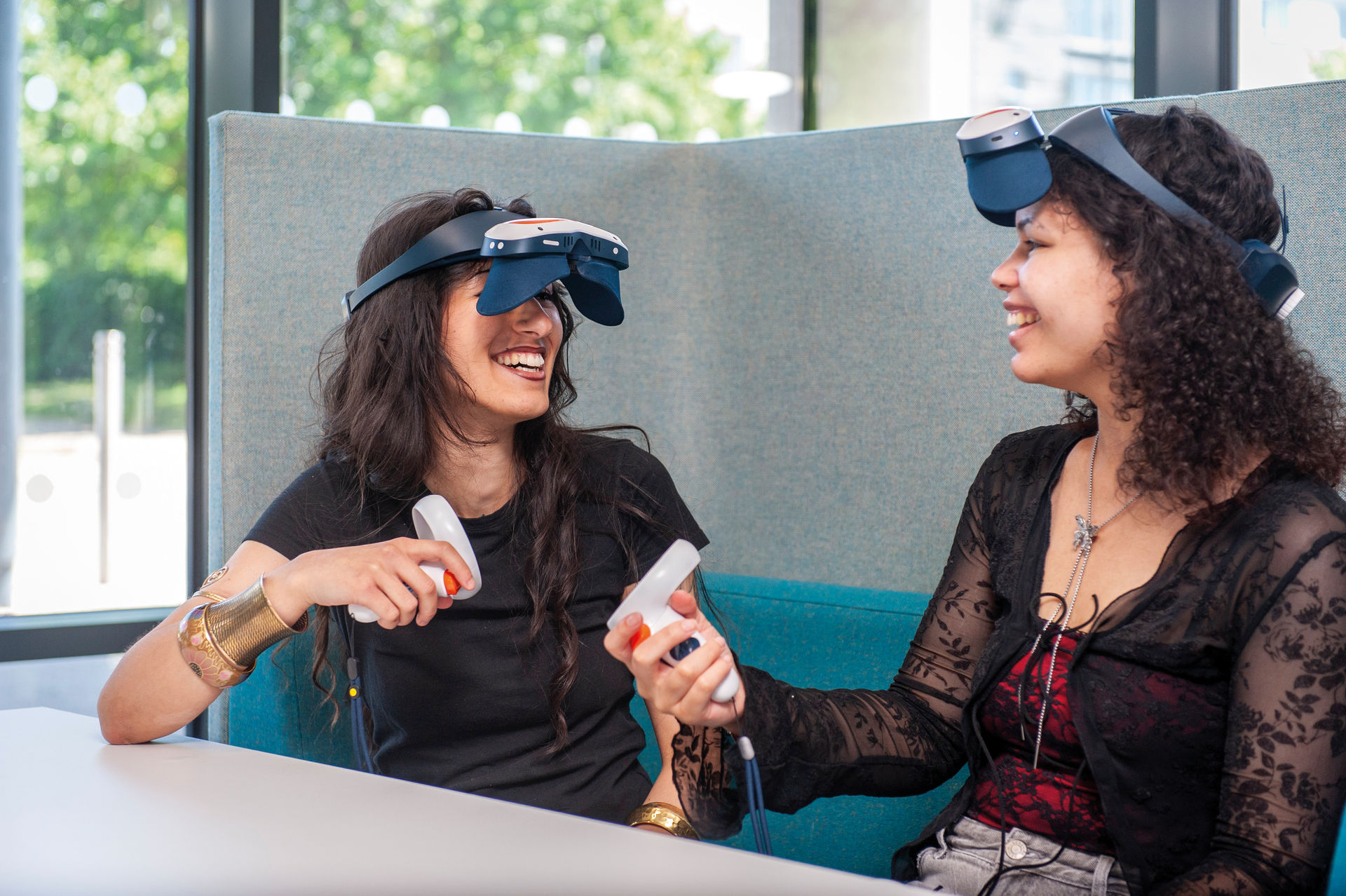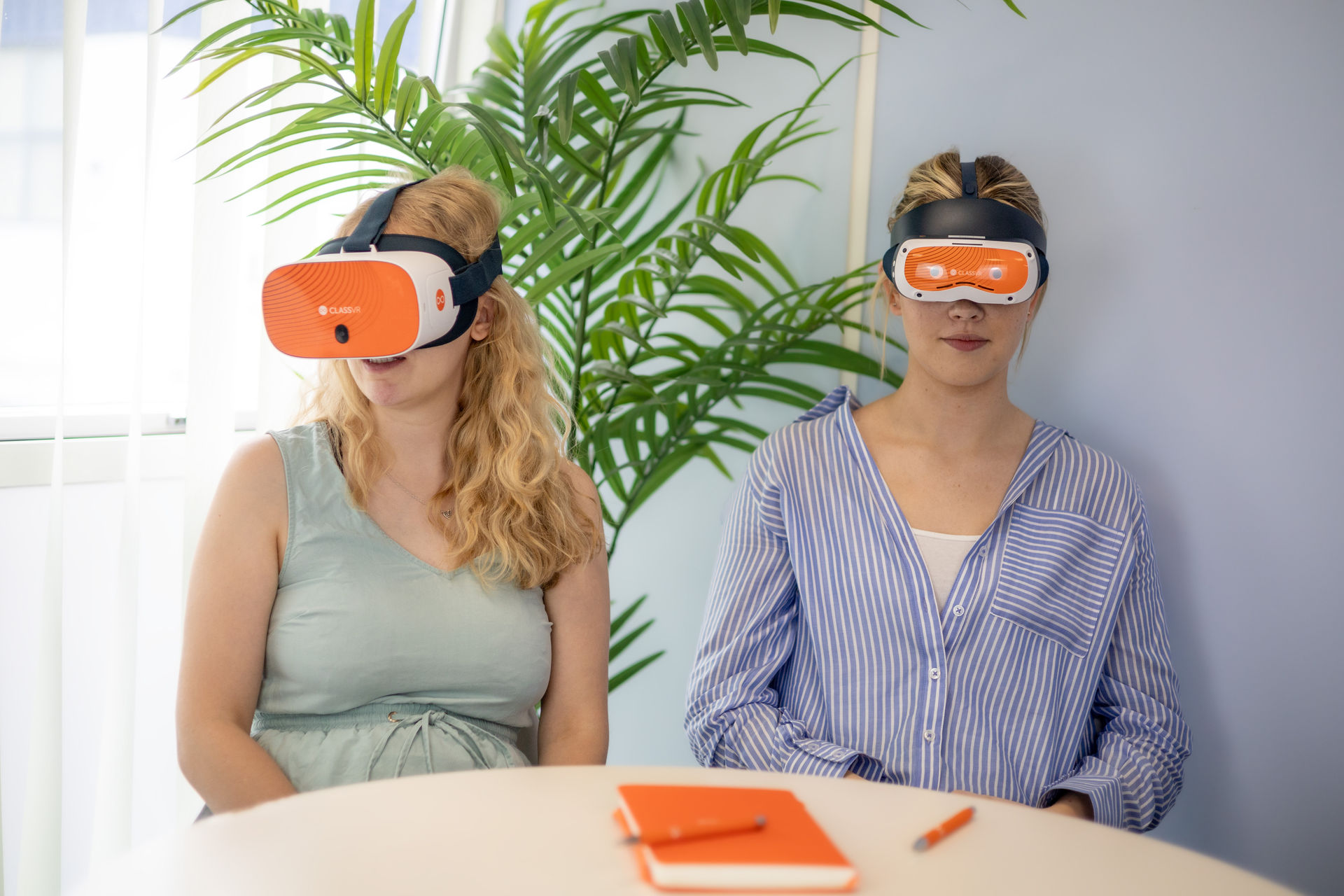Virtual and Augmented Reality for Further Education
Interactive Virtual Reality That Keeps Students Engaged and Learning
Virtual Reality for Further Education & Vocational Pathways
Further education is where students begin shaping their futures, often by choosing vocational routes that prepare them directly for employment. ClassVR brings these pathways to life through immersive, hands-on experiences that mirror real-world industries.
From construction and healthcare to hospitality, manufacturing, and skilled trades, students can safely practice technical tasks, explore career options, and build confidence in their abilities. At the same time, interactive modules develop essential workplace skills like communication, problem-solving, and teamwork, ensuring learners are not only career-aware, but career-ready.
By combining practical training with soft skill development, ClassVR helps colleges equip students with the tools they need to thrive in today’s job market.

Why Choose ClassVR
- Built for Education
- Simple to Use
- Proven Results
- Globally Trusted
Bridging the Gap between Classroom Learning and Vocational Careers
ClassVR Xcelerate along with EduverseCTE brings the power of virtual reality directly into career and technical education. Combining world-class, expertly curated content with advanced classroom hardware that supports full spatial movement, this all-in-one solution delivers truly immersive learning. From hands-on vocational and technical training to AI-driven soft skills coaching. EduverseCTE gives students the confidence and real-world experience they need to thrive in tomorrow’s workforce – all from the safety of their classroom.

World-Class Content – Built for Exploration, Practice, and Mastery
EduverseCTE offers a diverse range of immersive CTE experiences through partnerships with world-leading XR content providers. With over 135 focused VR video experiences, 9 interactive career simulation apps, and endless customisation options, students can explore, practice, and revisit scenarios across career clusters.

AI Career Readiness: Soft Skills for Workplace Success
Empowering students with essential soft skills is key to success in today’s workforce. The Career Readiness collection builds communication, leadership, and workplace etiquette through immersive, scenario-based VR simulations. With built-in AI-driven guidance, learners receive real-time feedback on areas such as eye contact, clarity of speech, and body language. In technical modules, prompts and step-by-step guidance ensure students understand and complete tasks correctly, helping them develop both the confidence and competence needed to thrive in their careers.
Vocational Pathways: Hands-on Technical & Vocational Skills Development
Give students practical experience in a variety of high-demand industries with our Vocational Pathways collection.
From construction and healthcare to hospitality and manufacturing, these VR simulations allow learners to explore career options and develop job-specific skills using industry-aligned tools and procedures.

Career Exploration: Made Immersive
Many students struggle to choose a career path without firsthand experience. The Career Exploration collection addresses this challenge with immersive job shadowing and role-specific VR content.

Built-In AI-Driven Guidance with Real-Time Student Feedback
In soft skills modules, learners receive feedback on things like eye contact, clarity of speech, and body language. In technical tasks, prompts and guidance help them to understand whether they’re completing each step correctly.
Transforming Vocational Development
Immersive simulations that build real-world skills, boost confidence, and guide learners from the classroom into their careers.

Gain Practical Skills for Real Careers
ClassVR’s vocational simulations let students gain practical experience in a wide range of industries, from healthcare and construction to catering and technical maintenance.
Learners can carry out hands-on tasks using industry-aligned procedures and tools, all in a safe, repeatable VR environment. This not only builds competence but also helps them transfer classroom learning directly into workplace practice.
%20(800%20x%20500%20px).png)
Explore Career Pathways
Choosing the right career path can be daunting. With ClassVR, students can step into immersive job shadowing experiences and explore day-to-day responsibilities across different professions.
By seeing firsthand what a role involves, learners can make more informed choices about their futures and feel confident in the pathways they select.

Build Confidence
Workplace success depends on more than technical knowledge. ClassVR helps students practice essential soft skills such as communication, teamwork, and problem-solving through interactive scenarios.
Whether presenting, role-playing, or collaborating in a simulated workplace setting, learners build confidence that carries over into interviews, apprenticeships, and employment.
.jpg?updatedAt=1757074975085)
Practice Without Risk
Mistakes are part of learning, but in many industries, they’re costly or difficult to recreate. With ClassVR, students can practice as many times as needed in a safe, controlled environment.
From perfecting a technical procedure to rehearsing customer service interactions, learners can build proficiency without the pressure of real-world consequences.

From Classroom to Career
ClassVR bridges the gap between study and employment, ensuring students leave Further Education not just with knowledge, but with the practical skills and workplace awareness employers demand.
By aligning immersive experiences with vocational training programs, colleges can prepare learners to confidently step into their chosen careers.
How ClassVR Benefits Learning
Compared to learners taught with more traditional teaching methods, learners using a VR headsets are:

4x
More Focused

4x
Quicker to Retain Knowledge

275%
More Confident in Applying Learnings
*source: PWC
Frequently Asked Questions
What’s the difference between VR and AR?
Virtual Reality and Augmented Reality are closely related but have different purposes.
Virtual Reality places you inside a fully immersive digital environment. With VR, your senses make you feel as if you’ve been transported somewhere else entirely.
Augmented Reality, on the other hand, blends the physical and digital worlds by overlaying computer-generated content onto what you see around you.
At ClassVR, our headsets combine both technologies. The built-in camera and 3D models let you experience AR by holding a digital object in your hand and exploring it up close, all while staying aware of your surroundings. At the same time, our VR experiences take you on immersive journeys to new destinations, from visiting different planets to exploring under the sea.
How are VR and AR used in Further Education
VR and AR are being used in educational institutions worldwide to make learning practical, engaging, and hands-on.
Here are some of the main ways:
- Career exploration, readiness and vocational development
- Seminar discussion and collaboration through immersive experiences
- 3D Models to dive deep into complex subjects
- Research and development for science and engineering
What are the benefits of using VR and AR in Education
Enhances engagement and motivation through gamification.
Supports diverse learning styles, especially visual and kinesthetic learners.
Makes abstract concepts more tangible and easier to understand.
Offers scalable, accessible learning resources available 24/7.
Can students create their own VR/AR content?
With ClassVR, students and educators can easily upload 360° images and videos to create fully immersive experiences. And with our EduverseAI tool, you can generate any scene in just minutes, simply by entering a few prompts.




